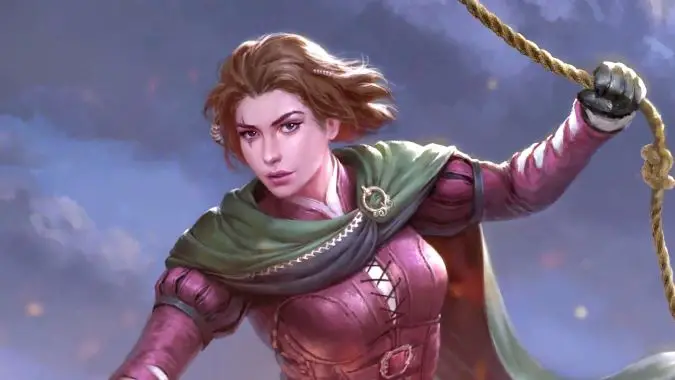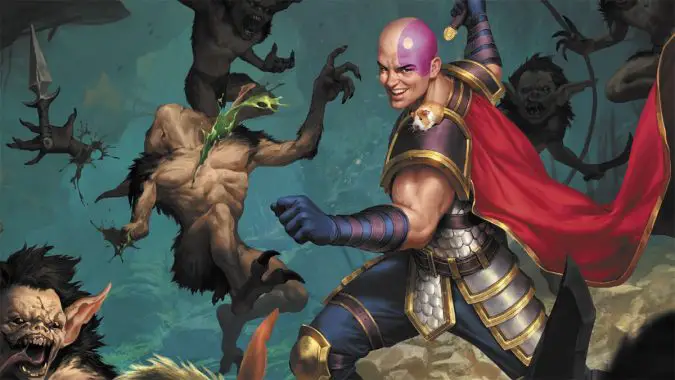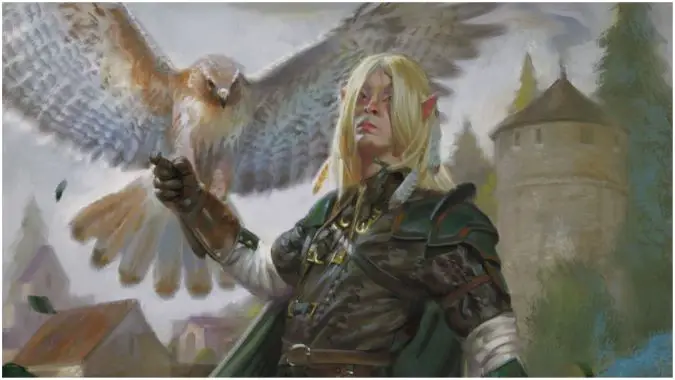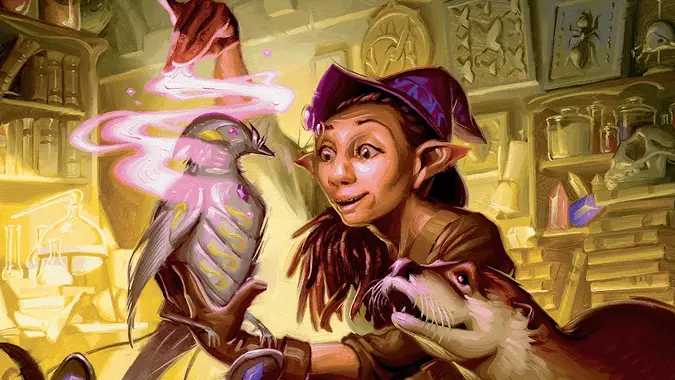What you need to know about changes coming to the Ranger class in One D&D

Rangers are not the strongest class in D&D right now, and Hunters are not the most exciting subclass, but there’s a bright spot at the end of the tunnel in One D&D. In the recent playtest material for One D&D, Rangers saw some changes that shake up how the class plays, as well as a different version of the Hunter subclass. The question is — does this make the Ranger better to play?
The short answer: yes. The long answer: let’s take a look at the updates to see how.
This is still in the testing phase, and this isn’t due to be official material until 2024. These specific changes may not make it live, and there is plenty of time for these to change. But this is is a good indication of where Wizards of the Coast is taking this class in the future.

General changes that affect the Ranger class in One D&D
In current D&D, Rangers don’t have Expertise. Thanks to Tasha’s Cauldron of Everything, they could pick up Canny, which doubles the proficiency bonus for an ability check when using that skill — basically Expertise, not called Expertise. Rogues and Bards have Expertise, and so Wizards of the Coast is finally acknowledging that, yes, they all have Expertise. Rangers, along with Bards, Rogues, and eventually Artificers, will be in the same category, gaining expertise at two different levels, doubling the proficiency bonus in two skills at each of those levels.
Next, all characters, regardless of race or class, will receive a feat at level one. There are several that benefit Rangers, such as Crossbow Expert, Two-Weapon Fighting, or Magic Initiate to have access to spells they don’t currently have access to.
Another major change is how light weapons work. Before, no matter what the weapon was, an attack just meant a single attack, unless the class had another ability that stated otherwise. However, now if a character has two light weapons — such as daggers, light swords, or a hand crossbow in each hand — when they make an attack with one, they can make an attack with the other. This is not an extra-attack ability, and can be done at level one. A Ranger can make two attacks at level one, making them more powerful than they were before right from the start.

Specific changes to the Ranger class in One D&D
Right from level one, the Ranger has spellcasting, and a much larger spell list to choose from. Currently, they don’t gain spells until level two. Also, in One D&D, all classes get to prepare spells daily, instead of being stuck with whichever spell was chosen when they leveled up — a huge, beneficial change. However, that’s not the greatest change at level one. The ability Favored Enemy currently lets the Ranger track certain kinds of creatures. The new one lets the Ranger always have Hunter’s Mark prepared, and it longer requires concentration. Why is that important? Pick up Magic Initiate: Arcane and grab the Hex spell. Without needing to concentrate on Hex, a Ranger can have both Hunter’s Mark and Hex up, for extra damage from both, made with two attacks from the light weapons, and really dish out the pain.
Nothing much changes until level seven. Land’s Stride used to allow the Ranger to pass through difficult terrain. This has changed to Roving, which increases walking speed by 10 feet, and the Ranger gains a swim speed and climb speed equal to the walking speed. The previous level 10 ability, Hide in Plain Sight, which increased stealth as long as the Ranger didn’t move or take an action, has been removed — this ability was pretty weak, so its removal isn’t a huge deal.
At level 11 the Ranger gains Tireless, which removes one level of exhaustion on a short rest and grants temporary hit points on a long rest. At level 13, a new feature was added, Nature’s Veil, which allows the Ranger to expend a spell slot to turn invisible for one turn — much better than any form of camouflage that was present before. Now the Ranger has 30 feet of Blindsight at level 15, which used to be a level 18 ability. Instead, at level 18 Rangers get a new version of Foe Slayer which increases the damage of Hunter’s Mark from a d6 to a d10. That’s not bad to have scaling on Hunter’s Mark, but also not the greatest of scaling for so late in the game.
Finally, like every other class now, Rangers get to choose an Epic Boon at level 20.

Changes to the Hunter subclass in One D&D
Currently, at third level, Hunters have Hunter’s Prey that lets them choose between three abilities. Well, that’s gone in One D&D. Now, Hunter’s Prey does just one thing, which is currently the choice called Colossus Slayer — probably because that was the choice everyone took. Once per turn, when hitting a creature that is below maximum health, the attack does an extra one d8 of damage.
At level six, Hunters receive the ability Hunter’s Lore. This is an improvement over an ability the Monster Slayer subclass has. When a creature has Hunter’s Mark on them, the Hunter Ranger knows their immunities, resistances, and vulnerabilities. This can help the party change tactics, focusing on particular kinds of damage. Not only is it useful, it feel very Hunter-y. Previously, Hunters had defensive maneuvers to choose from.
At tenth level, Hunters have Multi-Attack. Previously, this meant the Hunter could attack as many targets as possible within a ten-foot area. Now, instead the Hunter Ranger has the spell Conjure Barrage, which is always prepared, without counting against the number of possible prepared spells. This is a 60-foot, three d8, dexterity saving throw attack. Not only is it a great area-of-effect attack, it gives a Hunter that burst fire feel. While this is a third level spell, the ability also says this can be cast with a lower level spell slot, reducing the damage by one d8 for each lower level slot. This is one of the first times we’ve seen down casting a spell — a new feature of One D&D — in action.
The last feature of the Hunter subclass is Superior Hunter’s Defense at level 14. When the Hunter is hit by an attack, they can use their reaction to half the incoming damage, and then redirect the other half of the damage to a target within five feet. Now, this can be an issue as the Hunter will not usually be within melee range of an enemy if using a ranged weapon. The Hunter will either want to focus on using daggers or short swords to take advantage of this, or in a fight with multiple targets, position themselves next to one while shooting at another with a crossbow. This is sort of a combination of the previous abilities available. The Hunter choose between two abilities that could halve the incoming damage, or an ability that would cause a creature that missed an attack against the Hunter Ranger to reattack against another creature. This new feature combines the defense and the damage against something else, a great compromise.
In general, these changes look positive, not just on their own merit, but also in a general sense. They acknowledge some of the past weaknesses of Rangers, shoring them up without making the Ranger an unstoppable juggernaut. We’re excited to see how the other classes are retooled.
Please consider supporting our Patreon!
Join the Discussion
Blizzard Watch is a safe space for all readers. By leaving comments on this site you agree to follow our commenting and community guidelines.




